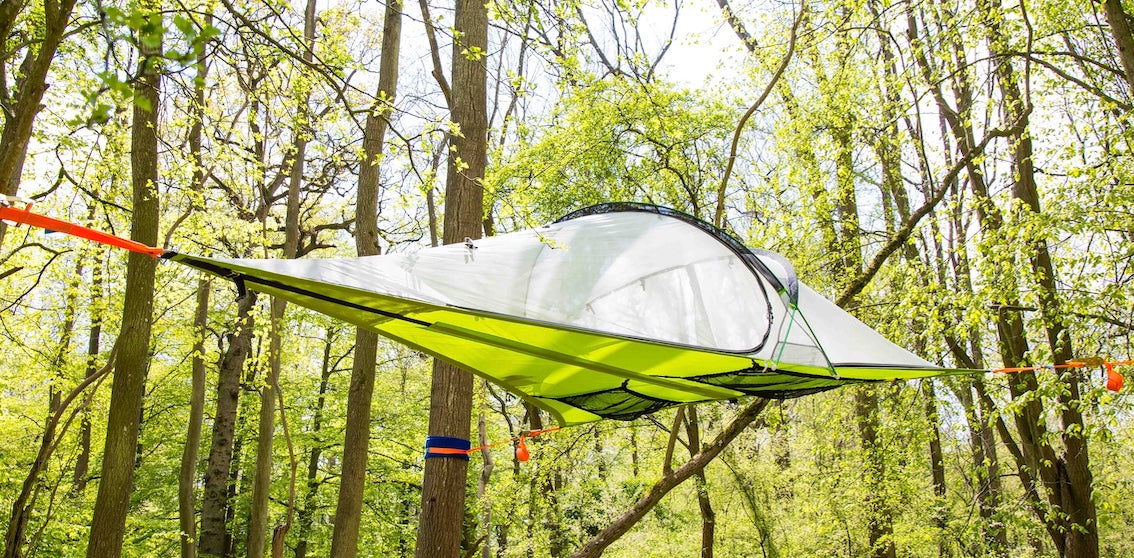Camping in America – The State of Virginia
The Old Dominion has some of the most attractive natural forests, hiking trails and bodies of water. Virginia camping can be in different sorts - including campsites, campgrounds (both established and dispersed) and wild/backcountry camping.
There are plenty of tent camping, hammock camping and of course Tree Tent camping opportunities in Virginia, across state parks, like Shenandoah National Park, and the open land, as well as along the trails. This blog will cover what you need to know for camping in Virginia.
Where to camp in Virginia
Virginia is popular for tourism and travel, so here we will lay out some great locations that are worth checking out before you decide on a spot. There are some fantastic state parks that deserve attention:
- Shenandoah National Park,
- False Cape State Park,
- New Ricer Trail State Park,
- Grayson Highlands State Park,
- Pocahontas State Park,
- North Bend Park,
- Jefferson National Forest
- Virginia State Park
There are a few campgrounds and campsites along the Appalachian Trail [add link to https://appalachiantrail.org/] that are regulated by the National Park Service that are home to some fantastic displays of scenic beauty. There are other campgrounds around such as Loft Mountain, Big Meadows and Lewis Mountain that give the opportunity to experience some primitive camping, backcountry camping and car camping.

What to pack for camping in Virginia
Depending on where you intend to camp, you will need to pack accordingly.
Backpacking & Hiking
If you are planning on hiking or backpacking, you will benefit greatly from lightweight equipment. Our T-mini 2-person hammock and UNA 1-person Tree Tent are perfect selections for either a quick-pitch rest or an overnighter – whether you’re staying in one of West Virginia’s many campgrounds, or going off the beaten track for a bit of Backcountry Camping.
Car Camping

If you are travelling and car camping in a vehicle, a heavy-duty tent may be more suitable. Our Safari Connect 2-person Tree Tent is ideal for those overnight stays, if there are more of you then a Safari Stingray 3-person Tree Tent will tick the box.
Essentials that you’ll always need when camping are;
- Sleeping bags
- A portable phone charger if you are using your phone to navigate your way
- Sunglasses to protect your eyes from that glaring sun
- A first aid kit
- Plenty of food and water
- Cooler
- Flask
- Head Torch or Lantern
Other additions might include fire lighting materials, and lighting for your camp at night.
What to consider before camping in Virginia
In Virginia there are two types of camping, dispersed camping and campsite camping. Campgrounds also follow this method through two types of campgrounds, dispersed and established.
Dispersed Campsites
Dispersed camping is more for veteran or experienced campers. Those that are able to get by with very little equipment, using bushcraft skills to replace the need for stoves, tools and other items or technology. Ideal for solo or small groups.
Established Campsites
Campsite (established) are for the casual camper, those in large groups of families. Established campgrounds usually have amenities such as showers and toilets, and even RV hook-ups.
Plan ahead
Before you head to a campsite consider the following.
Check to see if the site is pet-friendly if you plan on bringing along your four-legged pal.
Book your reservation as far in advance as campsites can fill up quickly, especially during the summer months/mid-camping season.
Beware of water levels. Don’t camp too close to the water as currents and tides are unpredictable and dangerous, and Leave No Trace guidance [link to relevant content] requires you to be at least 200 ft from water sources so that you don’t damage delicate flora and fauna that often live close by.
Camping permits. Some sites or locations may require a permit if you plan on camping with more than 10 people in your group. There may also be permits for backcountry camping in certain locations, so once you choose your desired spot, take a look online for any of these rules or regulations to avoid any mishaps.
Virginia Camping Tips
As well as the above, here are some extra tips to bear in mind before embarking on your camping trip in Virginia.
Leave No Trace
Top of the list for Tentsile is to follow Leave No Trace guidelines, wherever you venture. It’s so important to treat any environment you visit with respect, and leave it exactly as you found it. Brush up on your Leave No Trace knowledge at their website: https://lnt.org/
Food storage and disposal
It's also crucial to think about how to carry and store food on your camping trip. Animal resistant food containers are obligatory in spots such as the Shenandoah National Park, and are vital bits of kit if you’re in bear country. Check out the facilities / amenities where you plan to travel to make sure there will be an opportunity to dispose of waste before hitting the trail.
Local Rules and Regulations
Rules and Regulations can vary from place to place, so it’s always a good idea to make sure you’re clear on what is prohibited and what is permitted.
Discover more of Camping in Virginia
We hope you’ve found this Guide useful in preparing for your next great adventure! If you’re looking for more information, here are a few helpful links to get you started:
https://blog.virginia.org/2016/06/ten-tips-tent-camping/
https://www.myopencountry.com/best-camping-in-virginia/
https://www.bemytravelmuse.com/the-ultimate-camping-in-virginia-guide/
https://www.virginiagreentravel.org/2021/03/camping-in-virginia-beginners-guide/




